
Darts. Those funny shaped elongated triangles that help mold a flat piece of fabric to the body. Once our Regency ancestors learned how to use them properly, we didn’t look back. The 19th Century is filled with darts in garments.
Darts may seem like a standard construction element, but their specific placement and manner of sewing technique has great weight to the finished look of the garment.
If the definition of becoming proficient at a craft is the repetition of basic techniques, then let’s review the Art of The Dart – the most basic method of sculpting fabric to fit the form.
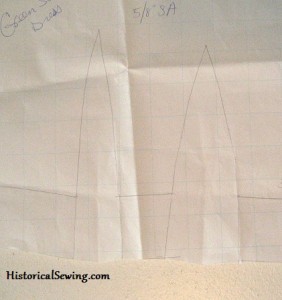
Basic Dart Elements:
- Fabric is pinched out to curve around large areas
- The pinched up amount is called the “dart take up”
- The sewing lines are called “dart legs”
- The end of the dart points to the largest area fabric is shaped around
- The points do not end right at the bust apex, the dart point lands ½” to 1.5″ away
- Darts can shape fabric to the body or to form the silhouette
- They can end in the middle of the garment or at a seam
- The dart take up can be so wide that it is cut out and the dart is sewn with a seam allowance
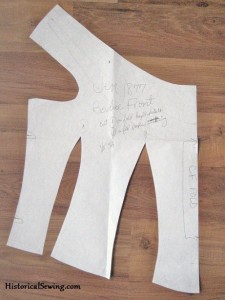
- Darts can radiate in any direction
- Fisheye darts are darts fully contained within a garment that are wide in the middle and taper to two end points
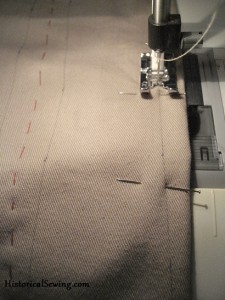
Basic Sewing Techniques for (Single) Darts:
- Make tiny clips into the fabric on the dart legs
- Match the clip marks by folding the fabric along the center of the dart and pin
- Pin on the fold at the dart point and along the leg lines. Use as many pins as you feel comfortable with.

- Start sewing at the wide clipped edge ; you can backstitch if you want, depending on the weight of your fabric
- Stitch down to the point and DO NOT BACK STITCH. Simply sew right off the fold of the fabric
- Cut end threads long and tie in a knot at the dart point to secure
- For double eye or Fisheye darts, start sewing from the center and move out to each dart point separately, tying off the threads the same for single darts.
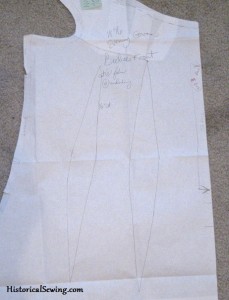
Another trick for well sewn darts is how you approach the dart point. As you get close to (like ½” or less away from) the point mark you should be quite close to the fold.
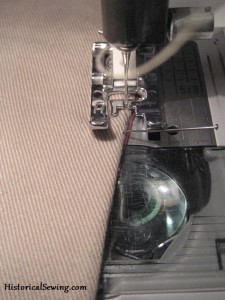
Sew a few stitches right along the very edge of the dart fold before going off the edge.

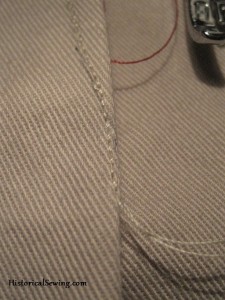
Many times you’ll have to eyeball this as you’re following the dart legs and approaching the point – you may have to move closer to the fold than where the leg is marked. It’s ok. Really. If you find yourself at the dart point before you’ve had a chance to sew along the fold, go ahead and continue PAST the dart point, on the fold, and exiting off no more than ½” further down from the point.
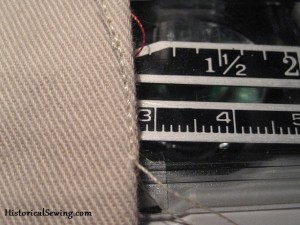
I always make a couple of stitches past the point so my markings won’t show from the outside. If you sew right on that fold, going that extra little bit past won’t make a difference.
Being one of the most basic elements to clothing construction, darts are invaluable for shaping tight fitting, boned Victorian bodices. If you find your single darts too wide at the end, re-fit the bodice by splitting up the dart take up into two or even three smaller darts. You’ll suddenly see that lovely hourglass shape!
Have you found a cool trick when sewing darts? What frustrates you most about them?

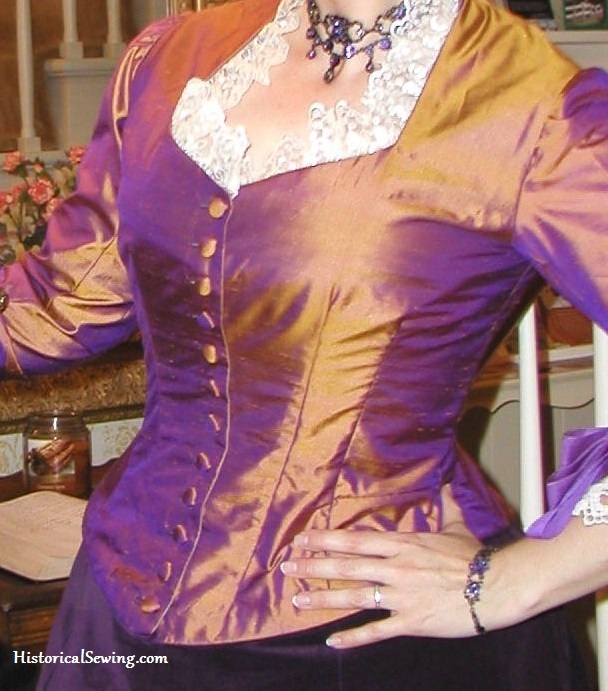
I really wish you would do a tutorial on larger busts. I’m top heavy but have narrow shoulders and believe me, this presents all kinds of fitting troubles in modern clothing not to mention anything historical!
Thanks for the suggestion! Any particulars about fitting large busts? Time periods, patterning or draping, etc.?
I didn’t see this mentioned in the above directions, but after you stitch off the end of the dart point, you can then tie a square-knot with the long ends of the threads. Tie the knot close to the point, then cut off the extra thread to keep the stitching from coming undone.
Another trick I learned about sewing darts, particularly in sheer fabric, is to take your BOBBIN thread up through the plate and THREAD THE MACHINE BACKWARDS with it, using enough thread that it won’t pull through the tension plates when you sew. Now, drop your needle right onto the point of the dart right by the fold, and then start sewing towards the end of the dart that will disappear into a seam (this doesn’t work on “fisheye” darts). This eliminates any knots or loose threads showing through the fabric and won’t come undone. basically, you’ve started sewing in the middle of the thread and used the thread on either side of the middle as your top and bottom threads! It’s a little time-consuming and you have to re-thread for each dart, but worth it for sheer garments.
Instead of backstitching or tying off the threads, I usually decrease the stitch length at the beginning and end of a dart. (The trick is to remember to change the stitch length back to normal for sewing seams!)
This article is very helpful. I remember a junior high school home ec teacher telling me my work was sloppy and useless because I sewed my dart several stitches past the end of the point before ending. Thanks for being my validation all these years later.
Hi ; ) I found this very informative, thanks !! sometimes its nice to see a refresher of some solid basics, and i often skip attention to details like these in the eager excitement to finish my garment. lol
What kind of sewing machine foot did you usein these photos?
My regular one “A” that fits my Viking Lily.